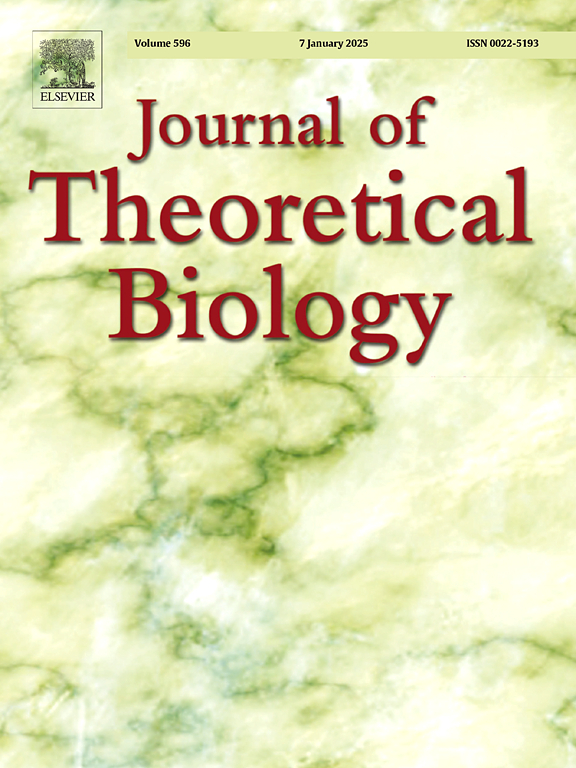美国农村社区早期COVID-19流行动态的随机建模
IF 2
4区 数学
Q2 BIOLOGY
引用次数: 0
摘要
由严重急性呼吸系统综合征冠状病毒2 (SARS-CoV-2)引起的COVID-19已影响到全球数百万人。我们研究了SARS-CoV-2在美国北达科他州和南达科他州六个农村县的传播。研究期间为2020年3月初至2021年6月中旬,在此期间实施了非药物干预措施(npi)。研究期结束时,美国出现了Delta变异。我们使用随机区隔模型模拟了每个县的传播动态,并在贝叶斯分层统计框架内分析了数据。我们估计了关键的流行病学和监测参数,包括繁殖数和报告概率。我们进行了一系列反事实分析,在这些分析中,npi被提前解除,并在不同程度上被建模为传播率的增加。在这一系列合理的备选对策下,病例数的增加从微不足道到大量不等,强调了及时采取公共卫生措施和遵守这些措施的重要性。从方法学的角度来看,我们的研究表明,尽管小型农村社区的流行病行为具有固有的高度可变性,但随机建模和贝叶斯分层分析的应用相结合,可以估计关键的流行病学和监测参数,并考虑在小型低人口密度社区中替代公共卫生措施的潜在影响。本文章由计算机程序翻译,如有差异,请以英文原文为准。
Stochastic modelling of early-stage COVID-19 epidemic dynamics in rural communities in the United States
COVID-19, caused by the severe acute respiratory syndrome coronavirus 2 (SARS-CoV-2), has affected millions of people around the globe. We studied the spread of SARS-CoV-2 across six rural counties in North and South Dakota in the United States. The study period was from early March 2020 to mid-June 2021, during which non-pharmaceutical interventions (NPIs) were in place. The end of the study period coincided with the emergence of the Delta variant in the United States. We modelled the transmission dynamics in each county using a stochastic compartmental model and analysed the data within a Bayesian hierarchical statistical framework. We estimated key epidemiological and surveillance parameters including the reproduction number and reporting probability. We conducted a series of counterfactual analyses in which NPIs were lifted earlier and by varying degrees, modelled as an increase in the transmission rate. Under this range of plausible alternative responses, increases in case counts varied from negligible to substantial, underscoring the importance of timely public health measures and compliance with them. From a methodological perspective, our study demonstrates that despite the inherent high variability in epidemic behaviour in small rural communities, the combination of stochastic modelling and application of Bayesian hierarchical analyses enables the estimation of key epidemiological and surveillance parameters and consideration of the potential impact of alternative public health measures in small low population density communities.
求助全文
通过发布文献求助,成功后即可免费获取论文全文。
去求助
来源期刊
CiteScore
4.20
自引率
5.00%
发文量
218
审稿时长
51 days
期刊介绍:
The Journal of Theoretical Biology is the leading forum for theoretical perspectives that give insight into biological processes. It covers a very wide range of topics and is of interest to biologists in many areas of research, including:
• Brain and Neuroscience
• Cancer Growth and Treatment
• Cell Biology
• Developmental Biology
• Ecology
• Evolution
• Immunology,
• Infectious and non-infectious Diseases,
• Mathematical, Computational, Biophysical and Statistical Modeling
• Microbiology, Molecular Biology, and Biochemistry
• Networks and Complex Systems
• Physiology
• Pharmacodynamics
• Animal Behavior and Game Theory
Acceptable papers are those that bear significant importance on the biology per se being presented, and not on the mathematical analysis. Papers that include some data or experimental material bearing on theory will be considered, including those that contain comparative study, statistical data analysis, mathematical proof, computer simulations, experiments, field observations, or even philosophical arguments, which are all methods to support or reject theoretical ideas. However, there should be a concerted effort to make papers intelligible to biologists in the chosen field.

 求助内容:
求助内容: 应助结果提醒方式:
应助结果提醒方式:


